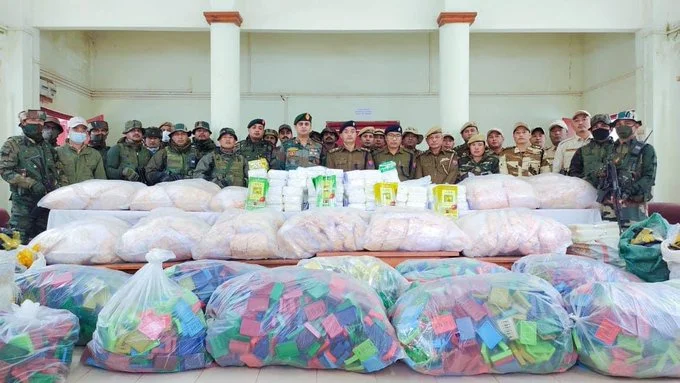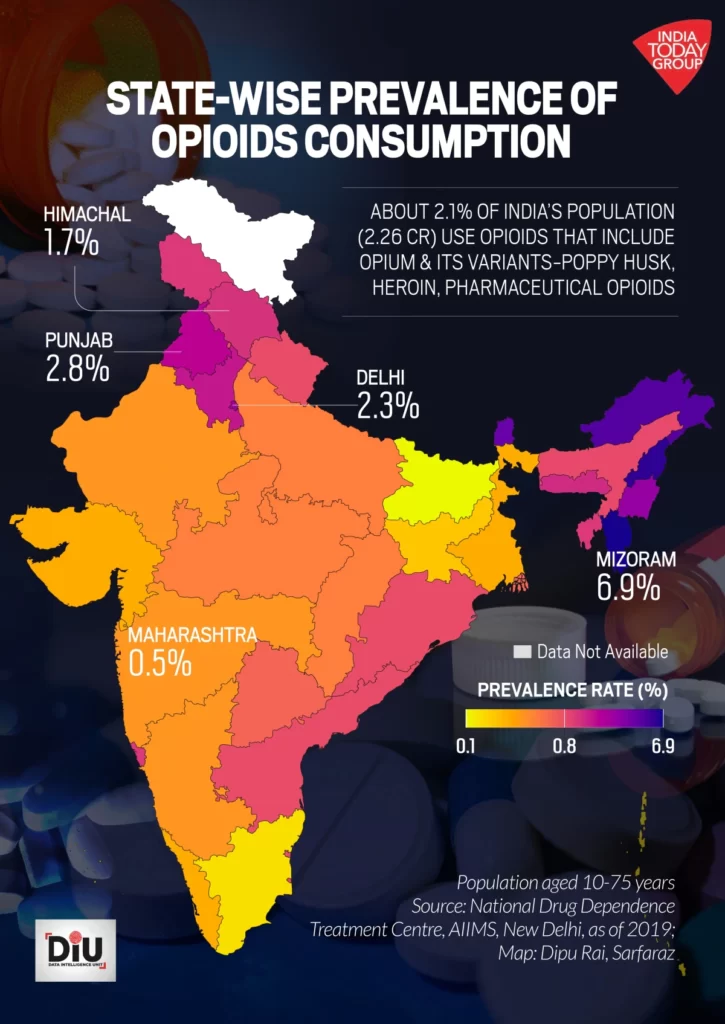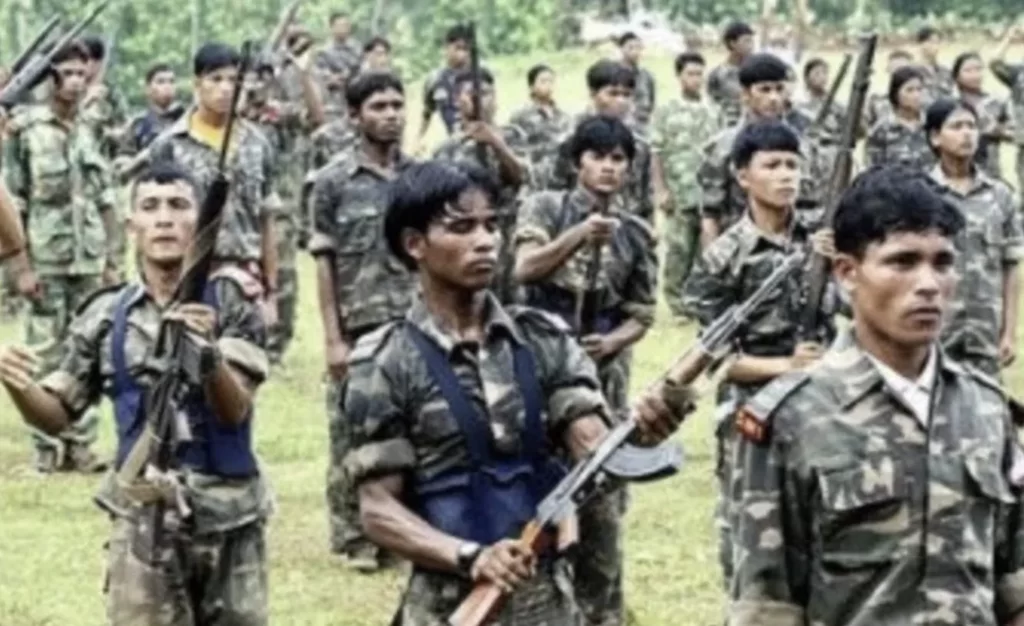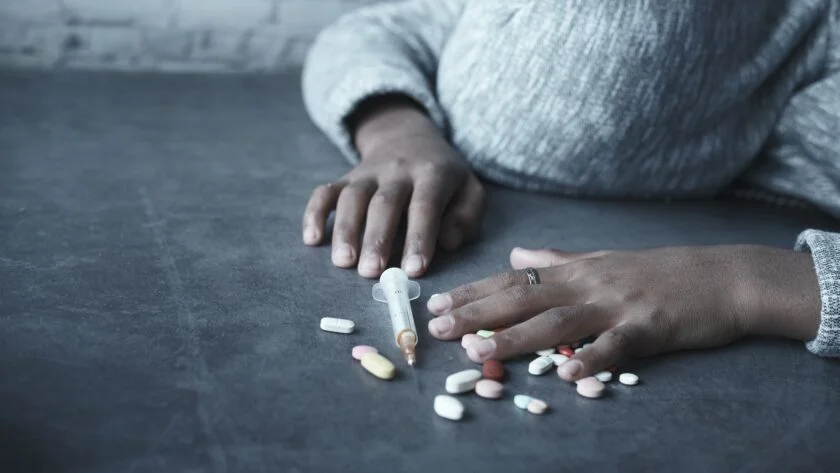While the covid-19 pandemic slowed the global economy, organised criminal groups in Asian markets skyrocketed. They started using new methods to engage in illicit activities, such as postal services, shipping containers and mechanisms for transferring payments through cryptocurrency. Drug trafficking is one of the illicit activities employed by organised criminal groups. It not only has detrimental health implications on drug users but also threatens nations’ social, economic, and political development and security worldwide.
This article looks into a few aspects of how illicit drug trafficking in the Golden Triangle acts as a menace to the security of India.
What Is the Golden Triangle?
Golden Triangle is a region in South East Asia comprising parts of Myanmar, Laos, and Thailand. The region has become the centre for opium production in the world, along with Afghanistan in the Golden Crescent region (Pakistan, Afghanistan and Iran) since the 1950s. It is also one of the oldest narcotics supply routes to North America and Europe.

Moreover, the Shan state of Myanmar is the largest producer of illegal drugs within the Golden Triangle region. Myanmar bags the second largest source of opium production after Afghanistan. However, the 2020 UNODC (United Nations Office on Drugs and Crime) report highlighted a decrease in the production and area of opium cultivation by 11% compared to 2019. The report also acknowledged that the production might increase, keeping in mind the COVID economic crunch and the Myanmar military coup in 2021.
Why Does Drug Trafficking in the Golden Triangle Affect the Security of India?
India is geographically located between the two largest drug trade areas, the Golden Triangle and Golden Crescent. This proximity to the Golden Triangle poses a significant threat not only to India’s borders but also to its national security. The heroin drug, after its production in Myanmar, is trafficked to US, UK, Thailand, India and Laos. This illicit drug trafficking to India through northeastern borders acts as a security threat to India.

Image courtesy-Twitter@NBirenSingh
Moreover, the routes used by drug traffickers could be used to smuggle weapons by terrorists into the country. For example, during the Pathankot attack in 2015, terrorists from Pakistan entered India through routes that drug traffickers already used. This way, it poses a larger threat to the security of India.
Golden Triangle and Drug Trafficking in Northeast India
The northeast region is a hub for drug trafficking and narcotics in India. According to the AIIMS report 2019, the northeastern states topped the list of opioid consumption. 7% of the total population in Mizoram consumes opioids, followed by Nagaland (6.9%), Arunachal Pradesh (5.7%) and Sikkim(5.1%). This complex drug use is due to its proximity to the Golden Triangle. All these states, except Sikkim, share an international border with Myanmar.
Since there is a porous border between India and Myanmar, cross-border crimes are persistent. Among these, drug trafficking, illegal trade, arms/gun smuggling and insurgency pose great security challenges to India.
Difficult terrain in the Northeast region and Free Movement Regime (FRM) are the two main reasons accounting for the extreme porous borders with Myanmar.
The topography of the border area ranges from mountains, hills, and river channels to dense forests. This makes the area vulnerable to transportation, communication and border guarding. Also, Free Movement Regime allows people to move on either side within 16 km of the international borders without visa restrictions. It also helps in maintaining cross-border ethnic ties intact. Therefore, cross-border insurgents and criminals often misuse these conditions.

Image courtesy-India Today
Additionally, poverty, underdevelopment, unemployment, low literacy and ethnic strife are some of the major concerns here. Criminals exploit this situation by compelling youth and children into criminal activity, especially as drug carriers. Therefore, the region remains a core for drug trafficking, posing a major security threat to India.
Other Security Concerns
One of the major security concerns for India, looming from the drug corridor of the Golden Triangle, is drug abuse and drug trafficking. Furthermore, insurgency and environmental damages are also among India’s concerns. The easy accessibility to drugs in Indian markets from Myanmar is increasing drug abuse cases. According to a 2020 report by the Ministry of Home Affairs, there is an increase in the cases registered under drug abuse that is especially high in northeastern states.
The most common drug consumed in India is opioids, particularly heroin. More than 90% of the heroin in India comes from Myanmar. That is why northeast states that share porous borders with Myanmar are an easy path to drug abuse and trafficking. Along with drug addiction, the prevalence of the drugs simultaneously increases drug addiction-related diseases like HIV or AIDS.

Furthermore, the drug corridor region provides an easy source of income for the insurgents through drug smuggling across the border areas. They buy arms and ammunition with the income they receive to carry on their operations, undermining the sovereignty of India. It becomes even more complex for the security forces to deal with the combined conspiracy of both insurgents and criminals.
In many of the Naxal-affected areas, drug mafias from other parts of India exploit remote areas along the border. They fund opium and cannabis cultivation in remote areas, particularly Manipur and Arunachal Pradesh. From there, they circulate the drugs to other states of India. Through this, they expand their revenues and arms smuggling.
Steps Taken by the Indian Government
1. Narcotics Control Bureau
The primary agency responsible for curbing the illicit drug trade is the Narcotics Control Bureau. Under this, the government introduced the Narco Coordination Centre (NCORD) in 2016 to coordinate with various governmental agencies. This was again restructured in 2019 into a four-tier structure, i.e., apex, executive, state level, and district level committees. Another scheme the government has launched is the Nasha Mukt Bharat Abhiyan (NMBA) in 272 vulnerable districts to create awareness about drug abuse among the youth.
2. Government Projects and Acts
The Ministry of Health and Family Affairs launched ‘Project Sunrise’ in 2016 to address the HIV prevalence in Northeastern states of India, specifically among drug-injected people. Another important act the Indian government introduced was the Narcotic Drugs and Psychotropic Substances Act (NDPS), 1985. This act prohibits a person from producing, consuming, possessing, purchasing and selling any narcotic drug or psychotropic substances. It was amended in 1988, 2001 and 2014.

3. Treaties and Conventions
India’s NCB works with several international agencies and made treaties and conventions to combat the growing drug menace. This includes the 1961 Single Convention on Narcotic Drugs, the 1971 UN Convention on Psychotropic Substances, the 1988 UN Convention against Illicit Traffic in Narcotic Drugs and Psychotropic Substances, and the UN Convention against Transnational Organised Crime (UNTOC) in 2000.
Although there are international treaties and national laws, one could see the gaps in preventing the rising drug menace in the country. A huge chunk of the attention should be diverted toward the social and psychological aspects of the issue. The measures can not only focus on the supply side but should also focus on the demand side. When one considers the issue from the sociological aspect, drug users should be considered victims, not mere criminals.

Overall, since the drug production in the Golden Triangle area comes from Myanmar, India must work closely with the Myanmar government. The problem in India’s multilateral effort is the military junta in Myanmar. Even though India continues to coordinate with Myanmar’s committee for drug abuse control, it becomes crucial to revive and strengthen the cooperation to tackle the growing drug menace.
Conclusion
Drug trafficking has the potential to affect national security. Traffickers are misusing India’s proximity to the Golden Triangle region to conduct illicit activities. However, it becomes more problematic when there is nexus between the drug traffickers and the terrorists. Overall, it becomes crucial that, along with regional cooperation, various stakeholders like the centre, states, military, governmental organisations and transnational organisations should work together to curb the growing drug trafficking.
You may also be interested in:
Analysing the Evolving Illegal Migration in South East Asia
About the Author

Navya has a keen interest in geopolitics, pursuing her master’s degree in International Relations from Pondicherry University; she has a penchant for research and looks forward to exploring domains like foreign policy, diplomacy, and national security, public policy, governance and climate change. She likes to engage in public discourses actively and is keen on collaborating with individuals and institutions of novel and diverse ideas. Navya believes in the ability of academic research to empower public opinion.






